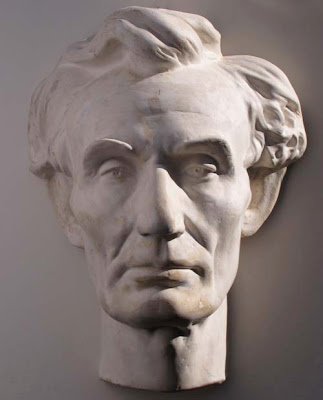 It’s not a light arrangement that you see too often, but it has its purpose, especially in film and comics. Because it places equal importance on the light side and the shadow side, it can convey the sense that the subject is a doppelganger, a person whose soul is a battleground of equal and opposing forces.
It’s not a light arrangement that you see too often, but it has its purpose, especially in film and comics. Because it places equal importance on the light side and the shadow side, it can convey the sense that the subject is a doppelganger, a person whose soul is a battleground of equal and opposing forces.Like this fellow, for instance.
 One thing you get with split lighting is reflected light bouncing back into the nasolabial furrow (the smile crease). This bounced light is very warm because it comes off the nose, so the N.L. furrow will likely be the warmest skin tone in the face.
One thing you get with split lighting is reflected light bouncing back into the nasolabial furrow (the smile crease). This bounced light is very warm because it comes off the nose, so the N.L. furrow will likely be the warmest skin tone in the face.







5 comments:
Equal and opposing forces, what are they? Perhaps
Incredible blogger/online teacher versus the master painter?
mmm... I dont trust that man...
All of these posts on lighting are superb! Thanks for all the beautiful blog you construct post by post! Now I must find that new book of yours in Canada, eh!!
Thanx for this series on portrait lighting. It’s really great to see all these lighting options together, and on the same subject. One usually sees different options on different subjects, or from different paintings… but seeing them all on such a well known and descriptive subject is very helpful.
What I am struck by is how much emotional content and expression can be suggested simply by the choice of lighting. In all of these examples the subject’s features are essentially flat, yet a wide range of emotion and psychological content is read into the image as a result of the lighting. The effect can be strengthening with complementary facial features and color schemes, or made ambiguous or subtle with contradictory facial expressions and color schemes.
Excellent posts, James, and I’m looking forward to your new book! -RQ
I'm glad everyone has enjoyed these posts. Roberto, I agree that each lighting arrangement has its potentials for emotional overtones and character interpretation.
I didn't get into a few other variables of portrait lighting, such as soft vs. hard light, lighting ratio between key and fill, and colors of light, all of which add many more choices! Maybe on future posts.
Post a Comment